As we enter Q3 and the second half of the year, it’s time to take a moment to look back and assess how things are going. I use this time to look closely at our client accounts and see what methods have had the most impact on generating sales pipeline to date.
I’d like to share my observations which boil down to three best practice techniques where we have seen the most impact.
While proactive outbound to net new accounts continues to be our core focus for building long-term sales pipeline, where we are seeing quicker traction is phone outreach to leads that have reacted to marketing efforts. While the best low-hanging fruit from this activity tends to go to a sales executive to convert, we are finding this often leaves a pool of warm leads that are only being nurtured by email, never move forward in the funnel, and become dormant over time; however, more touchpoints by phone change that outcome.
We’ve been working inbound leads from a variety of channels and score levels:
The combination of knowing there is some existing awareness plus potential interest demonstrated by their behavior increases the value of these reactive inbound leads. Proactive outbound pulls these leads through the funnel much faster.
Success is measured by the fact that the conversion metrics on these leads are exponentially higher. On one of our recent programs using this approach, the team converted over 40% of the leads that we reached by phone to discovery calls (this is double the typical conversion) and over 70% of those discovery calls entered the sales pipeline.
The results have been promising enough that we have begun developing separate KPIs for this pool of prospects and incorporating them into our lead forecast. We flag these as accelerator leads and carve out a portion of our outbound time to focus on them, which in turn increases the velocity of opportunities generated from the same volume of outbound.

The latest stat is that it can take anywhere from 10 to 18 touches to convert a lead. More touches equal more cost, but if you want to lower that number, it’s about being smarter with those touches. Directing more touches to warmer leads translates to more sales opportunities generated at the same budget.
PRO TIP: We often hear, “A lot of inbound leads aren’t really qualified; they are too low-level.” Something we’ve tried this year is to use the lead as an indicator of intent. We then move up the chain to executive-level decision-makers and use proactive outbound to get a meeting. The theory is that lower-level leads were generated because someone was given a directive by an executive stakeholder to research solutions. Skipping over that lower-level factfinder and going directly to the person with a title more likely to be a decision-maker has proven to be successful. We have had two programs this year where we tested this approach and saw great results.
By mapping our outreach strategy to an annual event schedule, we are achieving spikes in the number of meetings pre-booked to happen on-site, as well as follow-up meetings booked post-event. Similar to the inbound/warm leads mentioned above, this can create an accelerator on lead flow.

In the past year, this has become such an important component of our strategic outbound approach that we started offering it as a stand-alone service. Clients supplement their internal marketing and BDR efforts by enlisting our team to work the event leads. This gives them the extra velocity of touch points needed to better engage their target audience and maximize the return on their event investment.
PRO TIP: Many prospects say they will “stop by your booth,” but we all know the actual number who do can be small. Our team has found a way to improve that traffic. We use a combination of group texts to introduce the prospect to the seller, send day-of text reminders, and leverage the new apps many events have introduced that facilitate meetups.
Some of our Voice of Customer programs have focused on interviewing clients to better understand why they bought, where they are seeing an impact from our client’s offering, and where there are potential gaps or competitive threats. These intel points improve a go-to-market strategy by leveraging a deeper understanding of why customers bought in the first place.
Win/loss interviews are similar but go even deeper into the sales process and analyze specific reasons why the client’s offering was or wasn’t chosen.

However, the biggest area for growth that we have seen at MarketLauncher has been Voice of Customer programs that focus on market research. This means reaching out to net new prospects and engaging in interviews to help identify how the market defines a particular problem, the market’s perception of available solutions, or a wish list of the ideal solution.
This lets us understand the right language to use to define the pain and how to position the solution. We can even get into pricing, market appetite, and competitive insights.
PRO TIP: We often hear, “Why would anyone agree to take the time to participate in an interview with a stranger over the phone; what’s in it for them?” There are two things that can help flip that narrative:
I hope you found these observations and tips helpful. Remember that this is the time of year when your activity has a big impact on meeting annual sales goals as well as building next year’s sales pipeline!
Thanks for reading,
Lara




